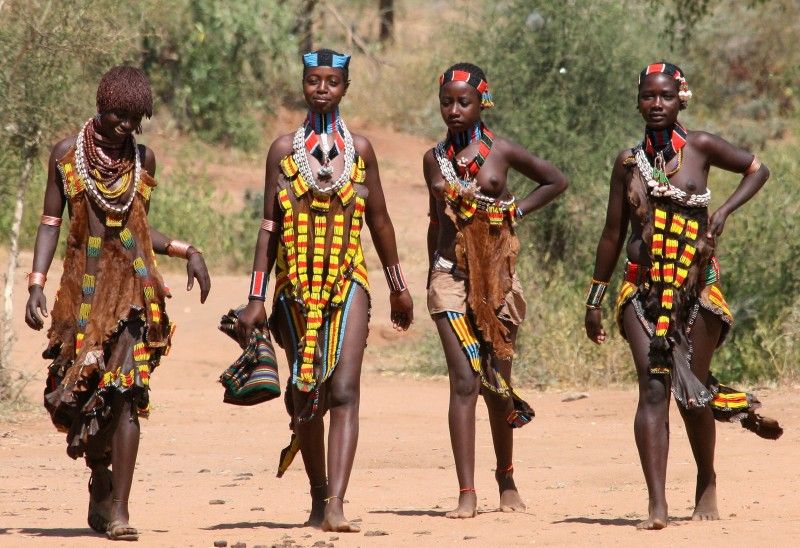The Maasai tribe of Africa is well known for its traditional handmade bead jewelry. Beadwork has been an important part of Maasai culture for many years. Maasai women set aside time every day to meet and work on beaded jewelry which includes colorful necklaces, bracelets, and pendants. It is considered the duty of every Maasai women to learn the jewelry making craft. All the tribes beadwork is made by the women but is worn by both women and men.
Cultural Significance of Maasai Bead Jewelry
The jewelry they create is not only beautiful but also has important cultural significance. The beadwork an individual wears will signify their age and social status. Generally individuals of high social standing will wear more colorful and intricate jewelry. Beads also serve as an important source of income for the Maasai. Tourist visiting the Maasai regions in Kenya and northern Tanzania will find many beautiful pieces for sale that make great gifts for women and for men. Often the Maasai will wear or give bead jewelry for special occasions. Below is a list of some examples of this use.
- Unmarried Maasai girls often wear a large flat beaded disc that surrounds their neck when dancing. They use the movement of the disc to display their grace and flexibility.
- Women will wear a very elaborate and heavy beaded necklace on their wedding day. The necklace often hangs down to the brides knees and can make it very difficult for her to walk.
- A married Maasai woman will wear a Nborro, which is a long necklace with blue beads.
History of Maasai Bead Jewelry
The Maasai have been creating bead jewelry for a long time, well before their first contact with Europeans. Before contact with the Europeans the tribe used the natural resources around them to create their jewelry. These natural resources included clay, wood, bone, copper, and brass. In the late 19th century trade with the Europeans made glass beads available to the Africans. The Maasai started using these glass beads to make their necklaces, bracelets, and other jewelry. Today glass is still the main material used by the tribe for their beads.
Maasai Bead Jewelry – Colors
The colors used in the beadwork are selected for their beauty. The colors are also symbolic and have important meanings understood by the tribe. Often these meanings have an association with cattle, which is the Maasai’s main food source and for which they have a deep connection. Below is a list of the main colors used in Maasai beadwork and the meanings associated with each.
- Red – stands for bravery, unity, and blood. Red is the color of cows blood. Often a cow is slaughtered when the Maasai meet and therefore unity is associated with red.
- White – represents peace, purity, and health. The association with health comes from white cows milk which the tribe drinks to stay healthy.
- Blue – represents energy and the sky. Rain falls from the blue sky which provides water for the cattle.
- Orange – Symbolizes hospitality. The association with cattle is that visitors are served cows milk from orange gourds.
- Yellow – like orange yellow also symbolizes hospitality. The animal skins on visitors beds are yellow.
- Green – symbolizes health and land. Cattle graze on the green grass of the land.
- Black – represents the people and the struggles they must endure.



